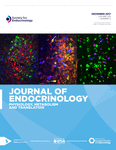The apelin receptor APJ: journey from an orphan to a multifaceted regulator of homeostasis
-
Figure 2
Apelin and APJ gene expression in rat tissues. Gene expression of apelin/APJ in the rat (see text for details). There have been fewer studies demonstrating the expression of apelin and/or APJ protein in the rat (or other species including humans) or determining whether apelin and APJ are localised in different cell populations or co-expressed within a given tissue. Examples of rat tissues where both apelin and/or APJ gene and immunoreactive protein/binding sites have been found (and may be functionally relevant) include the brain, pituitary, lung, heart, gastrointestinal tract, liver and kidney (see text and references Hus-Citharel et al. (2008), Wang et al. (2009), Zeng et al. (2009) and Piairo et al. (2011) for details).
-
Figure 3
Overview of APJ signalling pathways. Schematic diagram of APJ signalling pathways. Coupling to Gq/11 stimulates PLC-β signalling, including the hydrolysis of phosphatidylinositol 4,5-biphosphate (PIP2) to IP3 and diacyl glycerol (DAG). DAG subsequently activates PKC, which is an activator of the small G-protein, Ras. Ras then either activates a cascade leading to the activation of JNK, and the transcription factors SP1 and c-Jun or the MAPK cascade of Raf-1, MAPK-/ERK kinase (MEK1/2) and ERK1/2. ERK1/2 have a variety of substrates including numerous transcription factors (e.g. c-Jun and c-fos) and other kinases (e.g. p70S6K). Gq/11 also signals independently of PKC, but still via Ras and the MAPK cascade. Gi/o stimulates the MAPK cascade via PKC, and it can also activate phosphoinositide 3-kinase (PI3K) with the subsequent activation of Akt and mammalian target of rapamycin (mTOR), leading to the activation of both p70S6K and endothelial nitric oxide synthase (eNOS). Furthermore, Gi/o signalling inhibits adenylate cyclase (AC) activity. In contrast, Gs activates AC, increasing cAMP synthesis from ATP, leading to the activation of protein kinase A (PKA). Thin black arrows indicate activation pathways and the red blunted arrow indicates inhibition.
- © 2013 Society for Endocrinology











